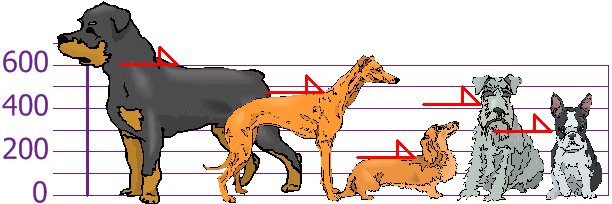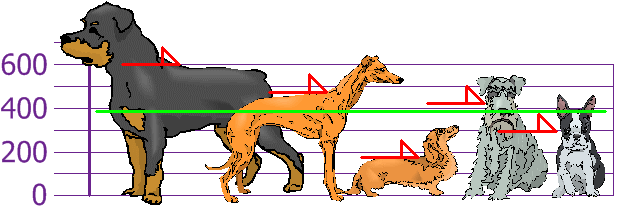Variance
The Variance is defined as:
The average of the squared differences from the Mean.
To calculate the variance follow these steps:
- Work out the Mean (the simple average of the numbers)
- Then for each number: subtract the Mean and square the result (the squared difference).
- Then work out the average of those squared differences.
Example
You and your friends have just measured the heights of your dogs (in millimeters):


The heights (at the shoulders) are: 600mm, 470mm, 170mm, 430mm and 300mm.
Find out the Mean, the Variance, and the Standard Deviation.
Your first step is to find the Mean:
Answer:
| Mean = |
600 + 470 + 170 + 430 + 300
| = |
1970
| = 394 |
5
|
5
|
so the mean (average) height is 394 mm. Let's plot this on the chart:


Now, we calculate each dogs difference from the Mean:


To calculate the Variance, take each difference, square it, and then average the result:

So, the Variance is 21,704.